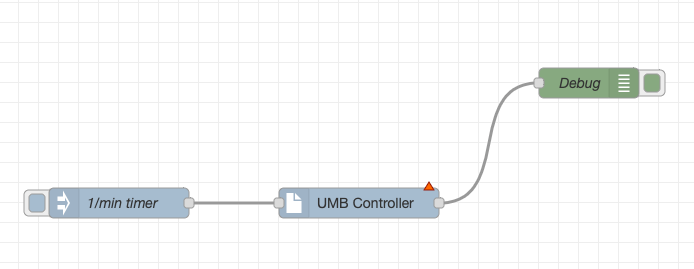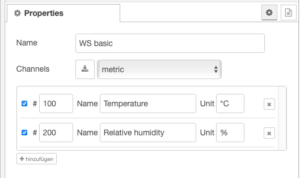The Internet of Things (IoT) networks devices with each other and enables automated processes for a wide range of applications. In environmental monitoring, sensors can thus be easily integrated into systems for information or early warning. There is now an IoT software module for measuring instruments from OTT HydroMet that allows users to develop their own systems on the open-source Node-RED platform without much technical effort. A report by Martin Kiepfer.
We live in an information age. This becomes obvious not least through the emergence of gigantic companies like Google, Facebook & Co. whose business model is based solely on the collection and marketing of data. The collection of these immense amounts of data certainly entails some risks that need to be discussed controversially. For this reason, a global rethinking is now rightly taking place, in which above all the secure handling and storage of this data is taking on a much higher priority.
Early Warning Systems Can Save Lives
Nowadays, data can be stored in a seemingly infinite amount and, thanks to the latest cloud technologies, can be accessed from almost anywhere. Especially the combination of simple data storage and the increasing networking of different types of devices is an enormous progress, which offers completely new possibilities for valuable and life-saving applications.
As a manufacturer of meteorological and hydrological measuring instruments, we at OTT HydroMet have a strong interest in ensuring that our measurement data is easily accessible and for this reason we are constantly exploring technical possibilities and trends. Our primary goal is to help our customers make the right decisions with the help of our solutions and thus, for example, avoid damage and even save lives during critical weather events.
IoT – the Internet Of Things
In traditional applications, it is often a great challenge to make the actual measurement data accessible. There are a variety of technical options for data transmission, but most of them require a lot of detailed knowledge. IoT stands for “Internet Of Things” and is used as a general term for an infrastructure that brings together a wide range of information independently of the underlying communication technology.
The aim of these IoT technologies is simplified access to a wide variety of data, which can then be used for further data processing. Detailed knowledge of the communication technology used (e.g. 4G, 5G, WiFi, LoRa,…) is not necessary, which means that the focus can be placed on the development of the actual applications. IoT platforms thus simplify the development of “smart” applications immensely and thus have the potential to usher in a new era of data processing.
The IoT Platform Node-RED
Node-RED is an open-source IoT platform launched by IBM in 2016. It is based on the JavaScript framework NodeJS and thus enables the easy development of server- and web-based applications. A node is an interface that forwards the information of a device and allows it to communicate with the world outside.
Due to its increasing popularity, a large number of modules and interfaces have been created in recent years. Meanwhile, the official library includes more than 3000 different nodes, so that many smart applications can already be easily implemented.
The basic concept of Node-RED is individual processing blocks – the so-called “nodes” – which provide various input, processing and output functionalities. These nodes can be easily interconnected and thus exchange data. The interconnection of several nodes is also called “flow”, in which the data “flows” through the different processing steps.
In addition to the input and output nodes of an individual node, most nodes also offer more or less extensive configuration menus in which details or parameters for the respective processing step can be set. E.g. for an e-mail “node” it can be configured to which e-mail address a corresponding message should be sent.
The creation of these applications is performed in a web-based interface. Programming skills are not mandatory. For advanced functionalities, basic JavaScript knowledge is extremely helpful.
The new Node-RED UMB node
The idea of a Node-RED node that enables the connection of sensors, which supports the own proprietary UMB protocol, has arisen at OTT Hydromet in Fellbach in the course of a study project. This “UMB controller node” is now available in its first version and has been published as an open source project on our public GitHub account.
The task of this node is to periodically poll and process measurement data from a device. In UMB, the measured values of a sensor are organized in channels. The channels to be polled can be configured in the settings of the node. The node is also able to dynamically read out the available measurement channels of a connected UMB sensor.
The input of the UMB node is only a trigger for the start of a request. The output of the node contains the measurement data of the set request in different types of representation. Details of the measurement data query can be completely configured in the configuration menu of the node. This includes the device address and the individual measuring channels.
Summary
IoT platforms offer a wide range of options for collecting and processing (measurement) data. They help users to focus on the actual application development. Node-RED is one of these IoT platforms that has gained great popularity in recent years. The program library presented in this article opens up easy integration into Node-RED for owners of OTT or Lufft UMB sensors, thereby enabling a wide range of additional application areas.
The presented UMB library is now available via our official GitHub account. It is made available in source code and can and should thus also be developed further by the open source community.





